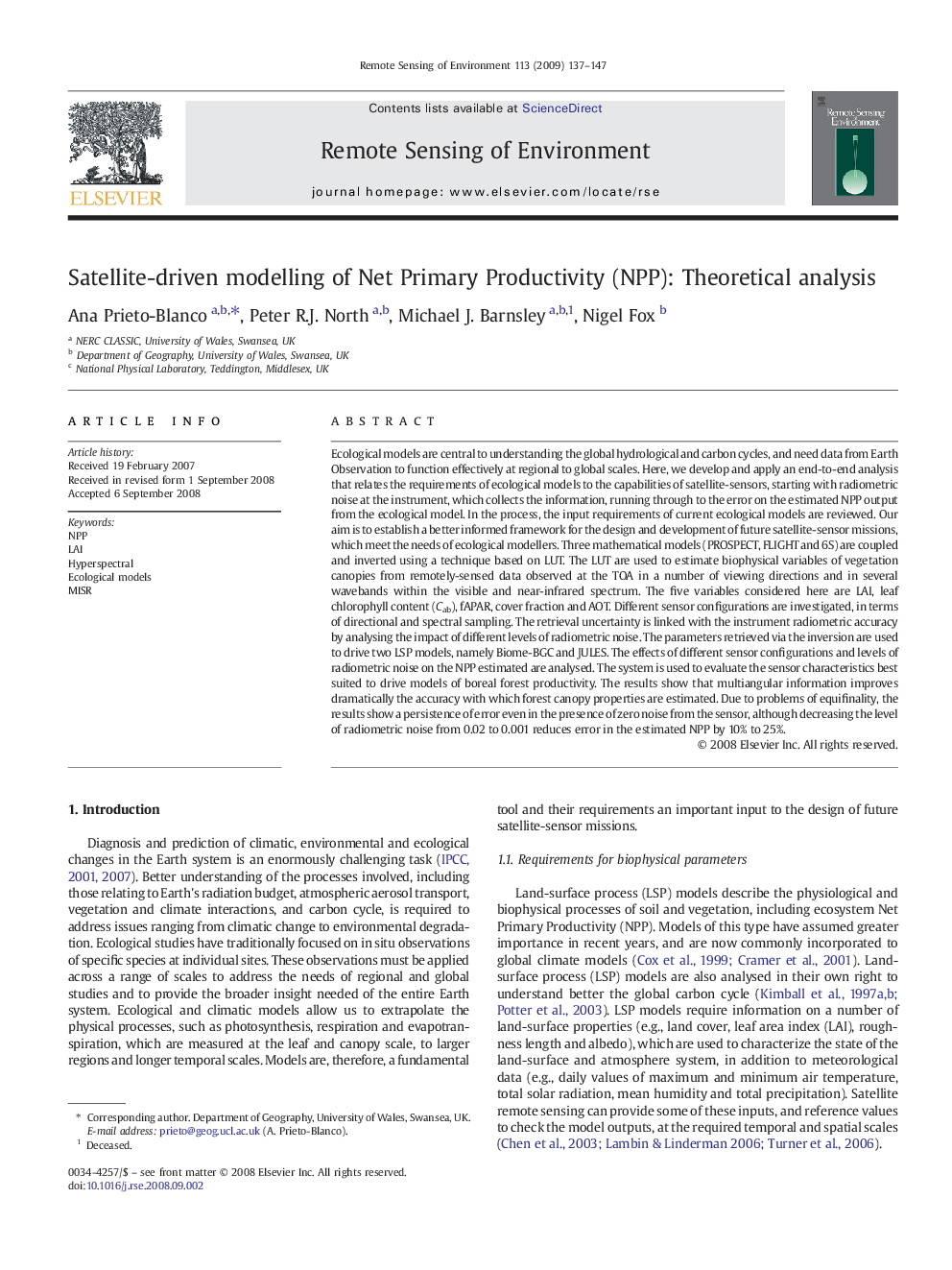| Article ID | Journal | Published Year | Pages | File Type |
|---|---|---|---|---|
| 4460182 | Remote Sensing of Environment | 2009 | 11 Pages |
Ecological models are central to understanding the global hydrological and carbon cycles, and need data from Earth Observation to function effectively at regional to global scales. Here, we develop and apply an end-to-end analysis that relates the requirements of ecological models to the capabilities of satellite-sensors, starting with radiometric noise at the instrument, which collects the information, running through to the error on the estimated NPP output from the ecological model. In the process, the input requirements of current ecological models are reviewed. Our aim is to establish a better informed framework for the design and development of future satellite-sensor missions, which meet the needs of ecological modellers. Three mathematical models (PROSPECT, FLIGHT and 6S) are coupled and inverted using a technique based on LUT. The LUT are used to estimate biophysical variables of vegetation canopies from remotely-sensed data observed at the TOA in a number of viewing directions and in several wavebands within the visible and near-infrared spectrum. The five variables considered here are LAI, leaf chlorophyll content (Cab), fAPAR, cover fraction and AOT. Different sensor configurations are investigated, in terms of directional and spectral sampling. The retrieval uncertainty is linked with the instrument radiometric accuracy by analysing the impact of different levels of radiometric noise. The parameters retrieved via the inversion are used to drive two LSP models, namely Biome-BGC and JULES. The effects of different sensor configurations and levels of radiometric noise on the NPP estimated are analysed. The system is used to evaluate the sensor characteristics best suited to drive models of boreal forest productivity. The results show that multiangular information improves dramatically the accuracy with which forest canopy properties are estimated. Due to problems of equifinality, the results show a persistence of error even in the presence of zero noise from the sensor, although decreasing the level of radiometric noise from 0.02 to 0.001 reduces error in the estimated NPP by 10% to 25%.
